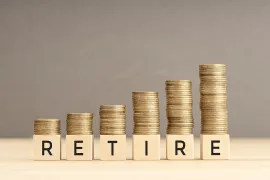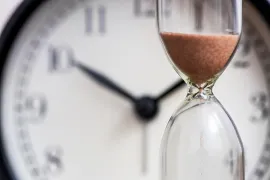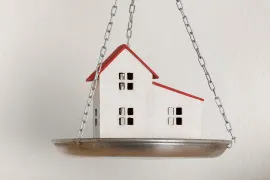B.C. couple has done everything right financially, but these tweaks will make retirement even more comfortable
They've built up $422,000 in savings and cash, but they can still boost savings and open TFSAs
Andrew Allentuck
A B.C. couple we’ll call Helen, 46, and Sam, 58, have a daughter Kim, 11. They have take-home income of $12,800 per month from their jobs, his in high tech, hers in a non-profit community service organization.
Both arrived in Canada at age 29 (but 12 years apart) and since then they have done everything right financially — they have built up $422,000 in registered and non-registered savings and cash. Sam wants to retire in seven years at 65.
Email andrew.allentuck@gmail.com for a free family Finance analysis.
Based on their net worth of $1,570,000, mostly in their $1.15 million house, they wonder if they can maintain their way of life and, along the way, provide sufficient money for Kim’s post-secondary studies. Their $27,000 home mortgage will be paid off within a year. At 65, Sam and Helen will each have 36 years residence out of the 40 years required for full OAS benefits.
Family Finance asked Derek Moran, head of Smarter Financial Planning Ltd. of Kelowna, B.C., to work with the couple.
Building assets
In the seven years to Sam’s target retirement at age 65, they need to build up their savings, and a Registered Education Savings Plan for Kim is a good place to start.
Currently, they have no RESP for Kim, but they can fast track its growth by buying back one year at a time, effectively doubling the normal annual contribution amount that qualifies for a grant. They can start this year, put in $5,000 and obtain the 20 per cent Canada Education Savings Grant, total $6,000, Moran suggests. If they do that and obtain a return of three per cent over the rate of inflation, then when Kim is 17, her RESP would have a $45,976 balance. That would pay for four years of post-secondary studies, enough if she lives at home.
Helen’s RRSP, with a $37,000 balance, is also underfunded. They could raise the balance using $41,000 of stock in Sam’s employer, a major tech firm. If Sam adds to Helen’s balance by making a spousal contribution, he will get the tax reduction and she will get the RRSP contribution. The strategy is common. It will achieve income shifting and tax reduction, Moran notes.
Within a year, their $27,000 mortgage will be paid off at their present mortgage payment rate of $2,500 per month. The end of mortgage payments will cut expenses, currently $8,250 per month, to $5,750 per month or $69,000 per year.
Their discretionary monthly income would then be $7,050 per month ($12,800 take home minus $5,750)
Their taxes can be reduced by use of Sam’s $310,000 of unused RRSP contribution space. He can take $55,000 of their $75,000 cash plus his $41,000 of company stock and transfer it to the RRSP or sell the stock outright and use the proceeds for a different investment. We’ve suggested the $41,000 go to Helen in a spousal plan. She will have a lower tax rate for her eventually withdrawals, so his remaining funds, $55,000, would go to his RRSP. He gets tax reductions for all the contributions.
Sale of his company stock would trigger a capital gain of $10,000, half of which is taxable. That will push his gross income from a current $207,600 to $212,600. If he adds $96,000 to RRSPs, his taxable income would decline from $212,600 to $116,600 and cut tax payable from $71,176 to $28,952 for a reduction of $42,224.
Assuming Sam retires at 65, He has seven years left to earn RRSP space at $27,230 per year plus the $310,000 unused room. That’s a total of $500,610 That averages $71,155 per year, which is achievable with the couple’s savings capacity, including tax refunds, Moran says.
The combined RRSPs including $25,000 in Sam’s defined contribution pensions total $306,000. If f they add $96,000 this year and $45,600 per year for the following six years and if the sum grows at a rate of three per cent over the rate of inflation, then in seven years they would have $798,200. That sum if spent in the 35 years from Helen’s age 55 to her age 90 would provide $37,150 per year.
The couple also needs to open TFSAs, which could each receive $75,500 of contributions. If they contribute the maximum allowable ($151,000) and add $6,000 each to Sam’s age 65 and grow the account at three per cent, they would have $280,419. That sum, still generating three per cent per year after inflation, would pay out $11,831 per year for the following 42 years to Helen’s age 95 at which time all principal and interest would be expended.
The payout process
Looking ahead to the time when Sam is 65 and Helen is 53, they would have her $39,600 gross job income, $6,642 from Sam’s OAS, his $11,288 CPP and $11,831 TFSA payouts. They would also have a little less than the joint $37,150 in RRSP income from their two accounts, but for computational ease we have combined the two. That’s a cash flow of $106,510 per year. Split and with no tax on TFSA payouts, after 15 per cent average tax, they would have $7,690 per month to spend.Two years later, Helen would quit. They would lose her salary but gain the additional RRSP income leaving them with $5,117 per month to spend, forcing them to limit some spending.
Once Helen turns 65, they would have RRSP income of $37,150, CPP income of $11,288 and $5,644, two OAS payments totalcling $13,284 and $11,831 TFSA payouts, for a total of $79,197. With TFSA cash flow removed, the balance taxed at an average rate of 12 per cent and with TFSA cash flow restored, they would have $5,925 per month to spend. They would not match present spending, but with their mortgage paid off, no RRSP contributions or cash savings, their expenses will have dropped to about $5,500 and they will be to sustain their comfortable way of life.
Retirement stars: Four **** out of five
Financial Post
(C) 2021 The Financial Post, Used by Permission

































